The Lesbian Vampire and Her Bisexual Lovers
The female vampire is an icon, a fetish, an image representing what we fear and desire. Monster theory concerns itself “with strings of cultural moments, connected by a logic that always threatens to shift; invigorated by change and escape.” (Cohen, 1996, p.45) The lesbian vampire and her bisexual lovers in the films Daughters of Darkness’ (1971), The Hunger (1983), and Jennifer’s Body (2009) use the abject, post-human vampiric female body as a site of transgression and monstrosity. The notion of the abject signifies borders between human and inhuman, purity and impurity, good and evil “That which disturbs identity, system, order.” (Kristeva, 2002, p.230) The female vampire is frightening in that she disrupts the social order through her sexual and social independence “a signifier for the instability of the heterosexual social order.” (Weiss, 1993, p.22) Through a bisexual reading of the monstrous feminine these films all represent female empowerment through sexuality – using their bisexual desire for both women and men as an expression of power in womanhood. Rather than presenting a dehumanising portrait of the monstrous woman and demonising their sexuality – all vampires continue to live on in the end, symbolising an unwavering and relentless female strength for generations to come. Lesbian and bisexual readings of the female vampire are complementary in that a lesbian reading illuminates the threat of feminism and female same-sex desire while a bisexual reading reflects cultural desires and anxieties of modern identity politics and binaries. “It is not so much the vampire herself who has changed, as the various modes of reading her, influenced by shifting cultural anxieties throughout the past century.” (San Filippo’s, 2013, p.46) The monstrous body explores both the sinister and sensual, aversion and arousal, dread, and desire.
The bisexual vampire is closely linked to the femme fatale who uses her sexuality as a weapon and means of co-opting power from men, resulting in their demise “women can no longer be assumed to embody what they seem” (Douglas, 2014, p.16) Creed points to an implication that given a choice, women might prefer the embrace of their own sex and, by indulging in her desires she is moving away from her proper gender role. (Creed, 1993, P.61) Vampires are not just a metaphor for sexuality - but lesbian advancements are signs of female monstrosity. An image reclaimed by queer feminists as a progressive icon of powerful sexual liberation that breaks free from the patriarch. The female monstrous body can be interpreted as post-human because the female has been cast as separate from the “man” at the heart of humanism who is male, white, middle-class, Anglo and heterosexual, liming the intersects of gender, class, race, or sexual orientation; therefore, humanism is overtly oppressive.” (Blackburn, 2016 p.141) The female body has been used as a site of transgression, a marker of impurity, a liminal place where the discomfort of abjection takes place “becoming a woman is a process imbued with giving humanoid shape to, and thereby effectively concealing, alien forms that reside under the permeable boundary of the skin.” (Jaleca, 2017, p.2)
‘Daughters of Darkness’ (1971)
‘Daughters of Darkness' (1971) features the explicitly sexual 1970s bisexual vampire, embodying men’s anxieties about the sexual revolution and second-wave feminism. (Zimmerman, 1984, p.158) The bisexual trope insinuates greed and predatory behaviour, a threat of excess, and opulence, the female vampire is a symbol of sexual freedom outside the constraints of the heteronormative family unit and patriarchy. (Richter, 2013, p.278) Newlyweds Valerie and Stefan arrive at an empty and opulent hotel on the European coast, soon followed by the countess Bathory, played by Delphine Seyrig, a vocal feminist of the time. The Countess Elizabeth Bathory is a sixteenth-century Hungarian noblewoman, accused of torturing over 600 virgins and bathing in their blood to maintain her youth and beauty. (Creed, 1993, p.60) A love triangle between the three ensues and the countesses acts as a conduit for the couple to discover the darkest parts of themselves. A war of nerves plays out where jaded age preys on narcissistic youth, and cruelty and seduction become indistinguishable from satanic forces. Here homosexuality and feminism are not coded against male latency. Typically, lesbian vampires are annihilated to protect masculinity but here heterosexuality (symbolising the patriarch) is the real villain, a decidedly ambiguous character. Shot from Valerie’s perspective, the film encourages identification with the women. (Thompson, 2016, p.7) Stefan is an unsympathetic bisexual sadist, so you crave female victory.

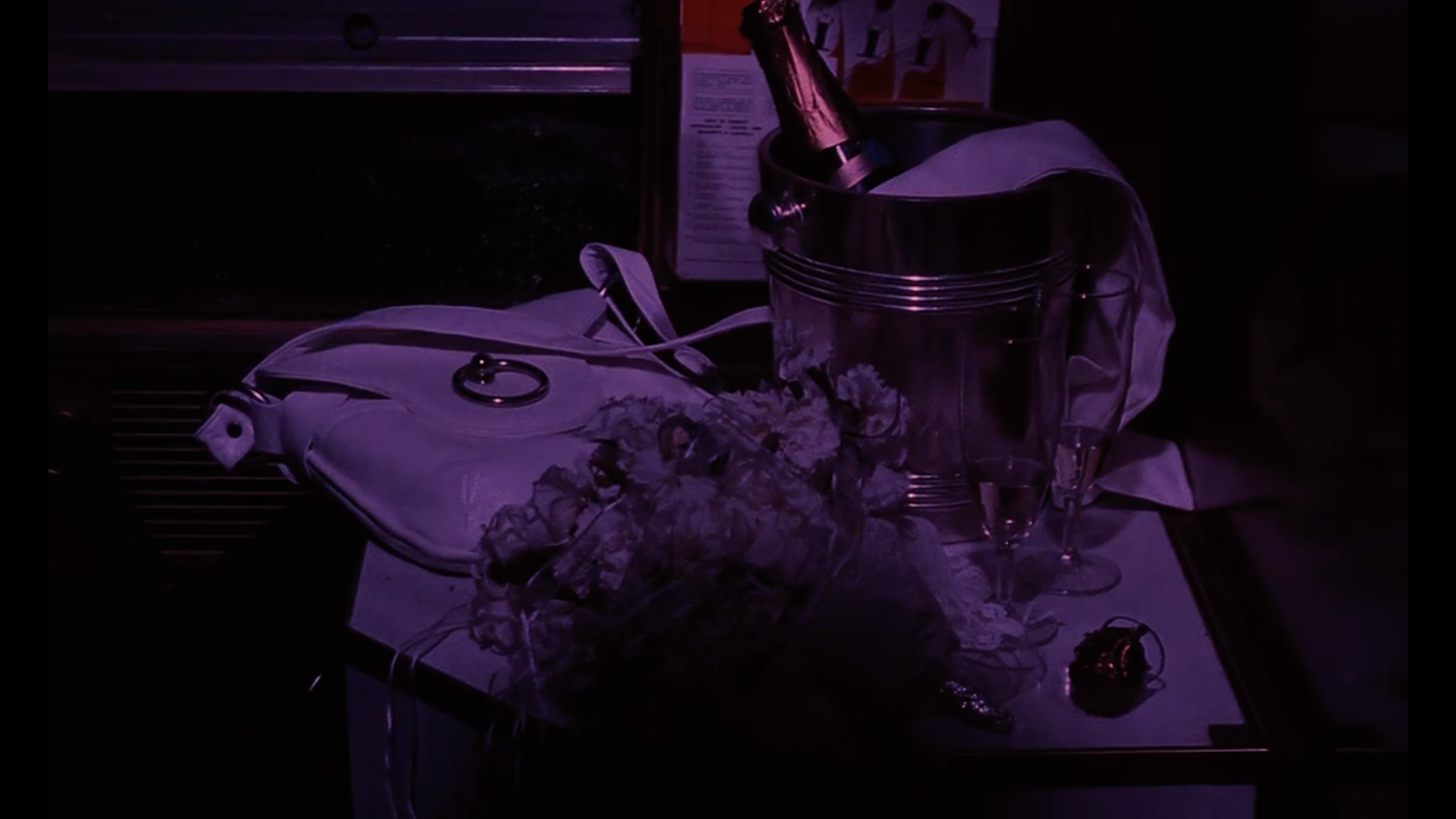

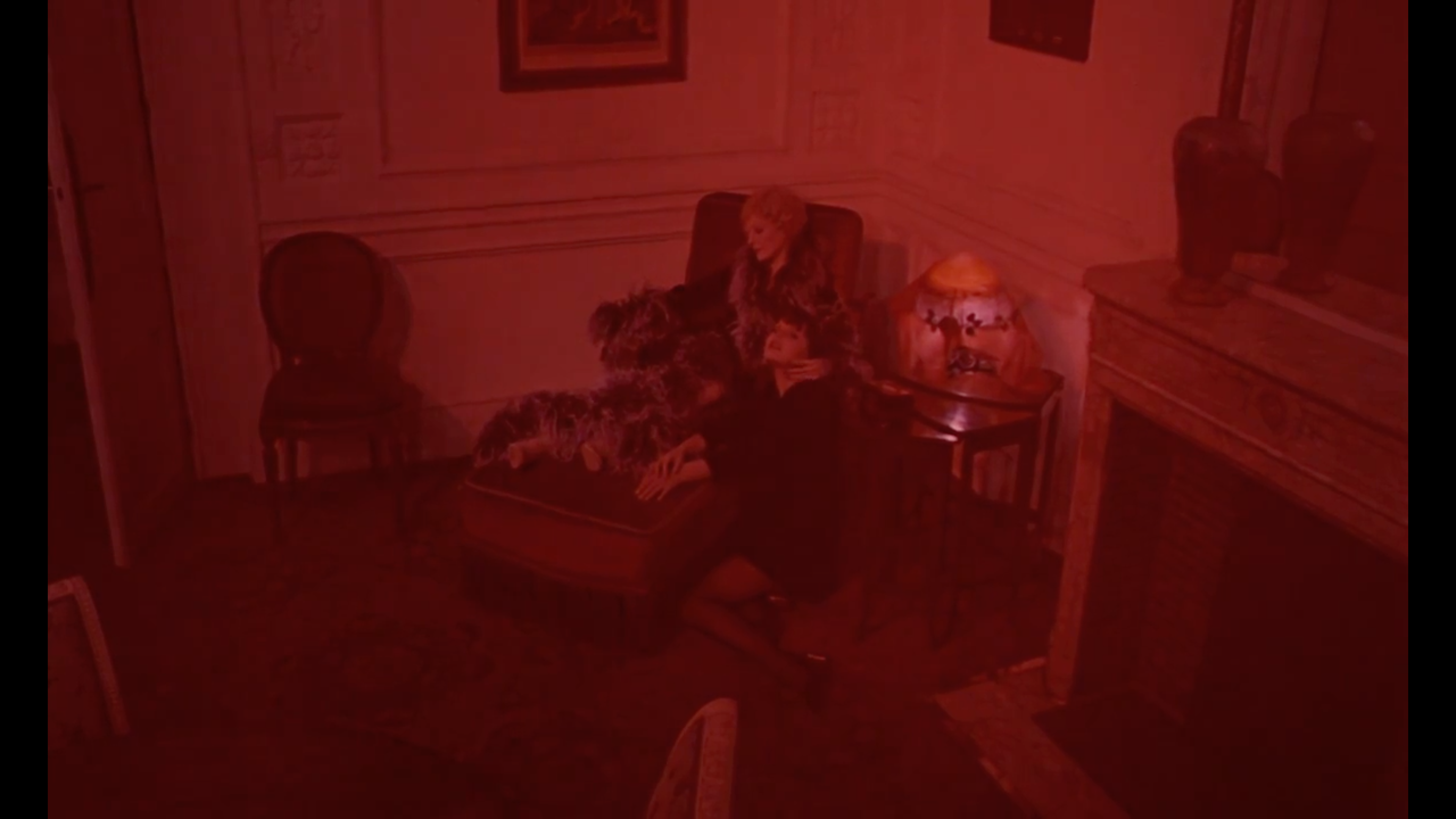
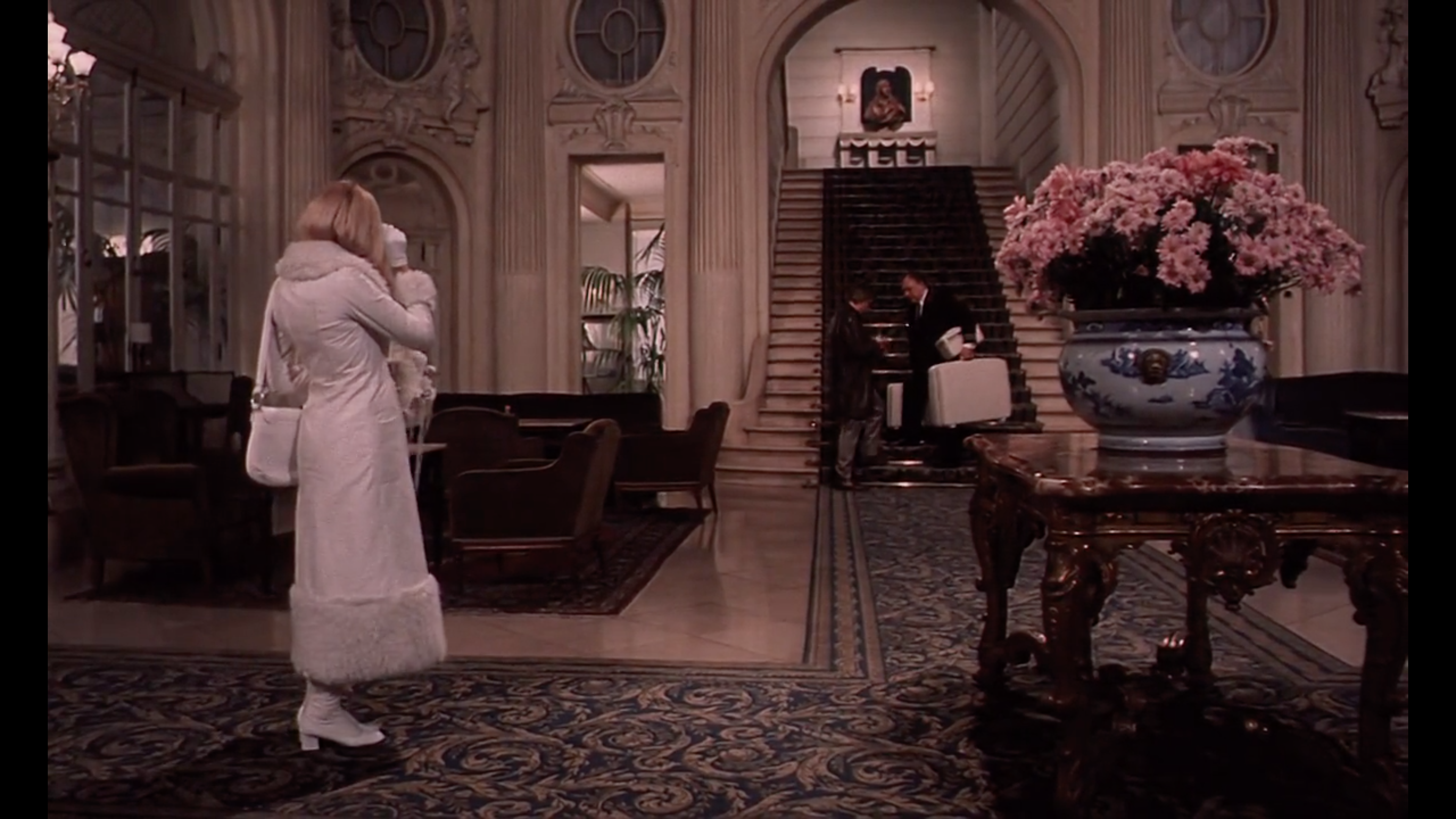
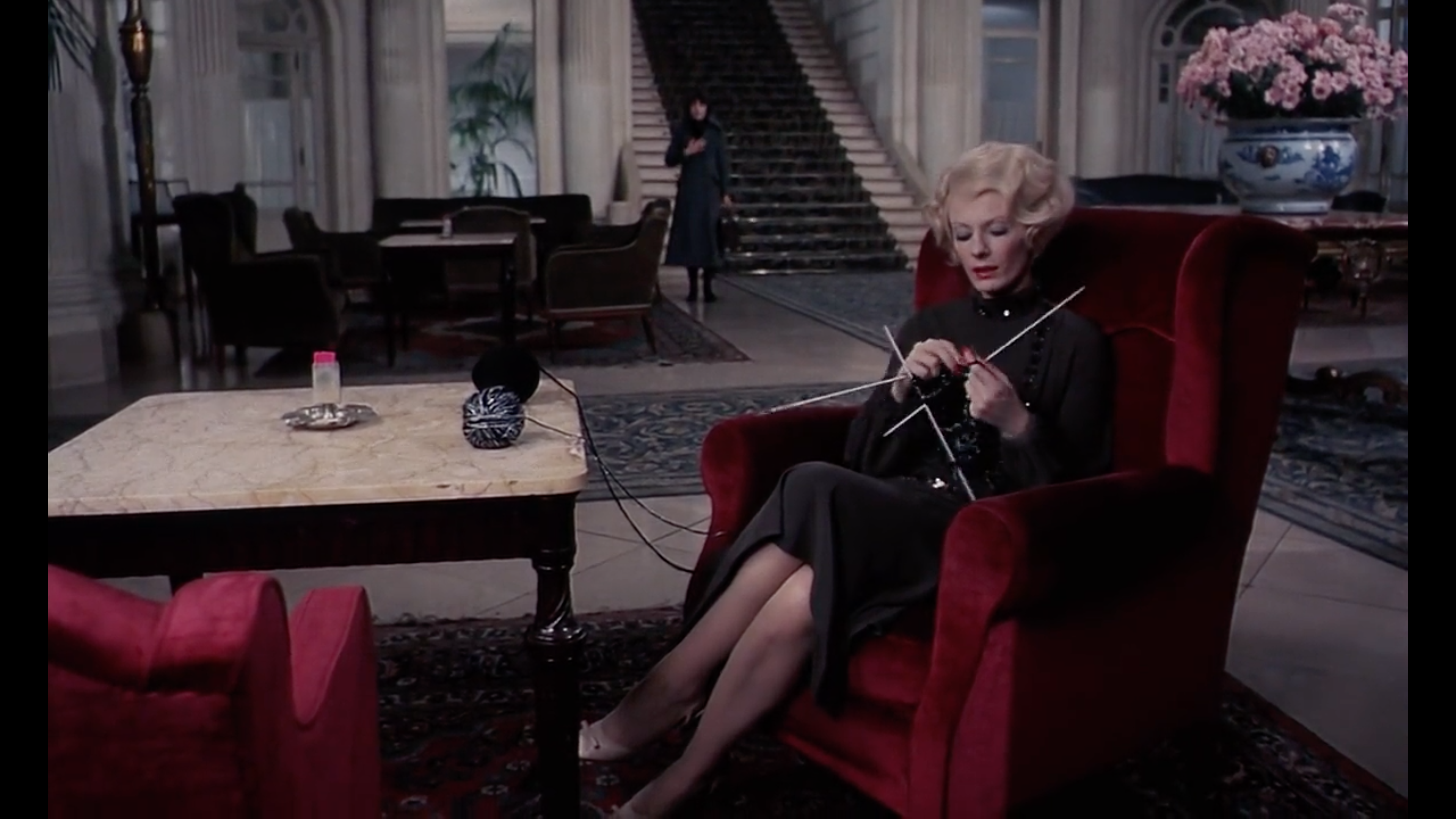

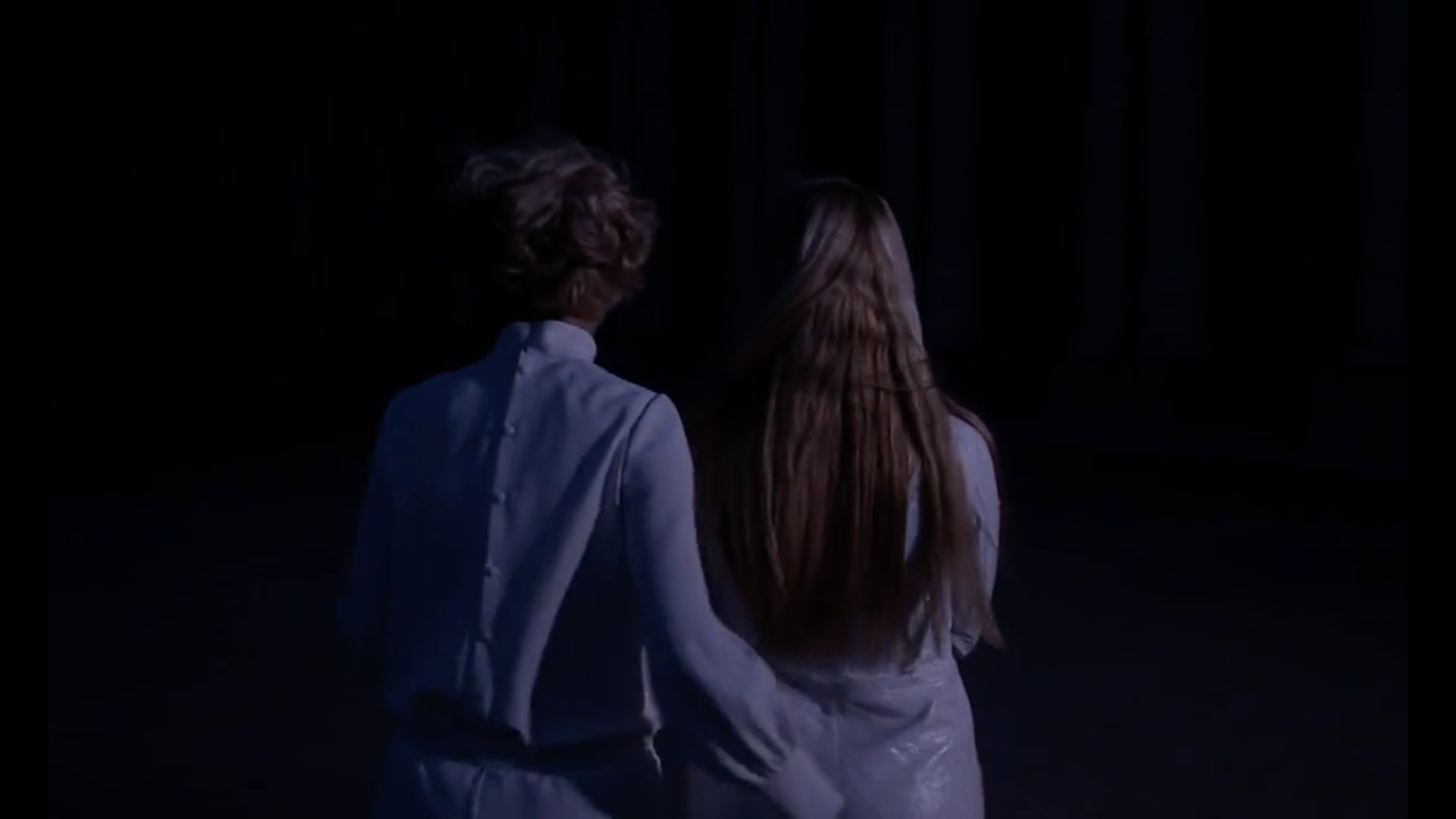
Daughters of Darkness (1971) Dir. Harry Kümel, Belgium, Showking Films
The costuming, set design and colour choices mirror character anxieties and sensuality; red and violet filters insinuate luxury and lust. Virginal Valerie is often dressed in white against the mysterious and alluring black or red clad countess featuring a red lip. The affluence and excess are signifiers of bisexual indulgence, and a critique of European aristocracy and exploitation. (Zimmerman, 1984, p.152) The countess seduces Valerie with kindness and tenderness, deromanticising the bond that sustains her heteropatriarchy, describing marriage “not as blissful but as ineffectual or even perverse”. (San Filippo, 2013, p.118) As they walk gothic halls Elizabeth warns Valerie “what every man wants of every woman: a slave, a thing, an object of pleasure.” (Thompson, 2016, p.7) Back at the hotel, Valerie rejects Stefan retreating to the countess’ bed addressing her as Elizabeth for the first time. The scene is cast in a red filter insinuating sex and bloodletting as Valerie becomes Elizabeth’s new consort. In a bid for power Elizabeth invites Valerie and Stefan to dine in her room saying tellingly “you sound as if you hate me, I want to be loved, I want everybody to love me.” Elizabeth places a necklace around Valerie flaunting their dedication. In another show of dominance, the countess insists Valerie kiss Stefan but upon her refusal, he attacks her and the vampires kill and suck his blood. As they drive into the night Valerie lusts after the countess begging to taste her fingers, and the countess moans “faster, faster” this open display of lesbian lust is met with a crash and the countess is impaled. The bisexual perspective of the film is solidified in the end when we see Valerie live on, taking on the persona of the countess seducing another couple. (Richter, 2013, p.277) In her vampirism, the countess acts as a liberator for Valerie who is released from her abusive husband, free to wander Europe as a creature from the night free of the upper class that manipulated her.
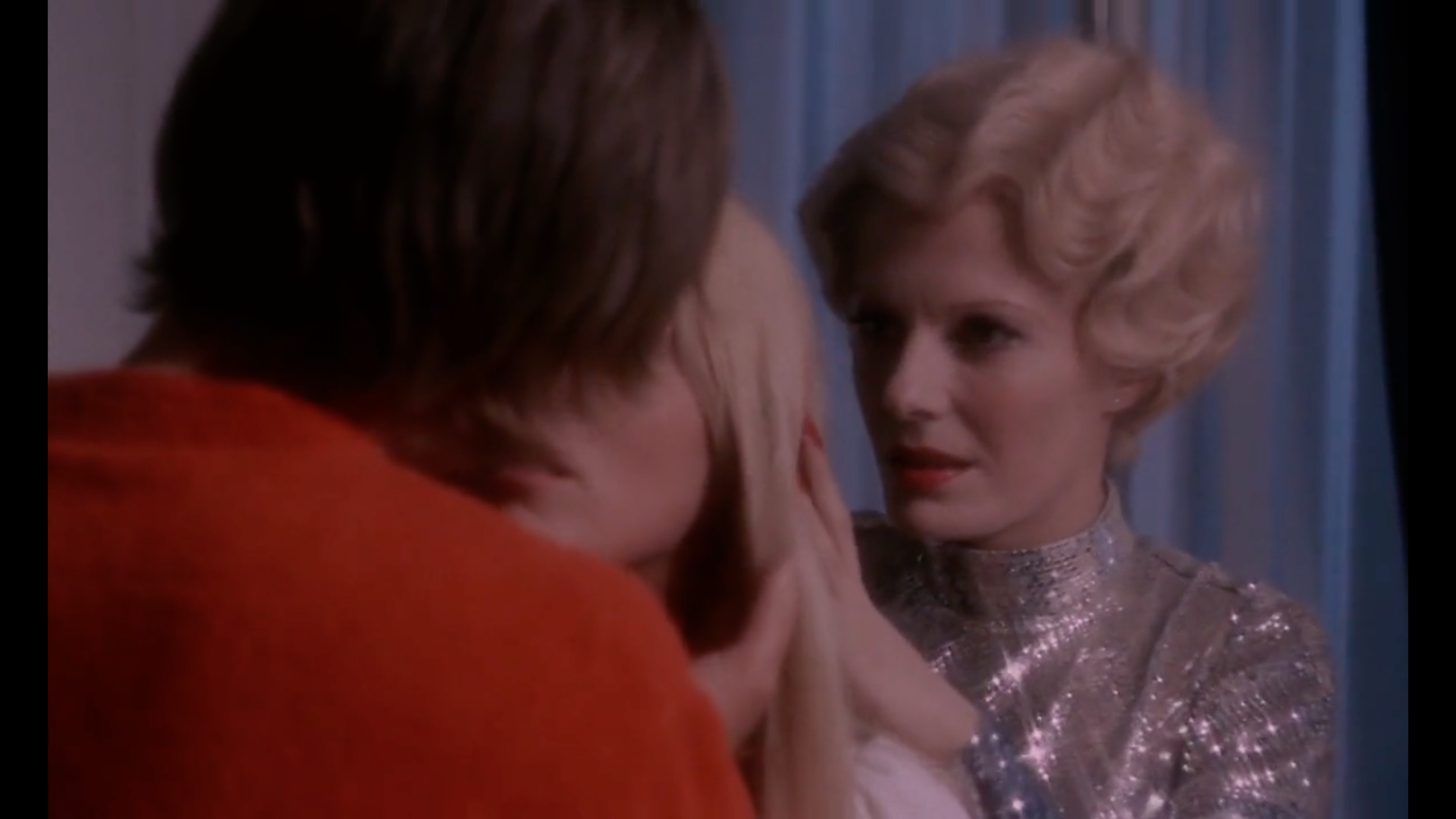
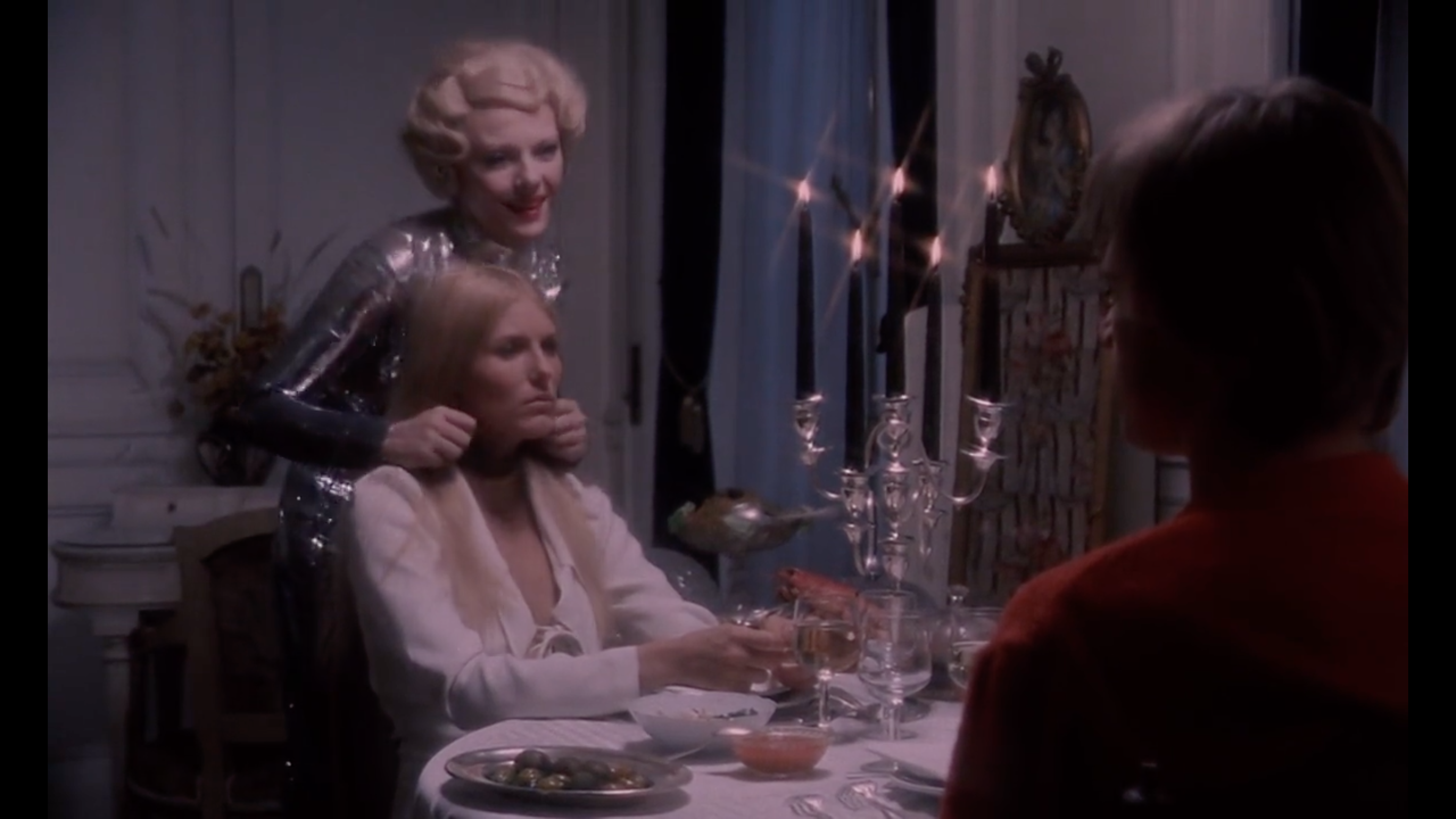

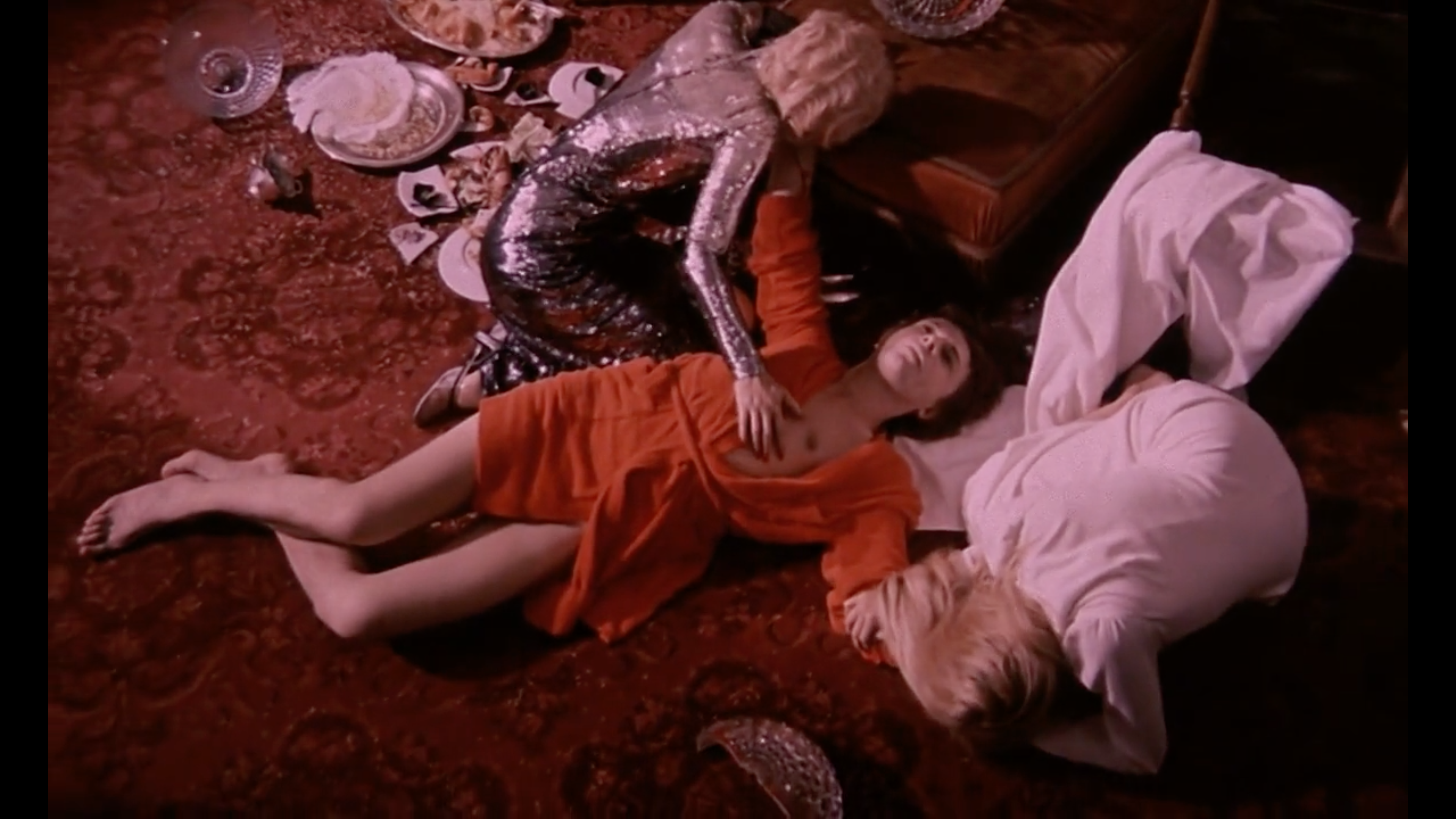

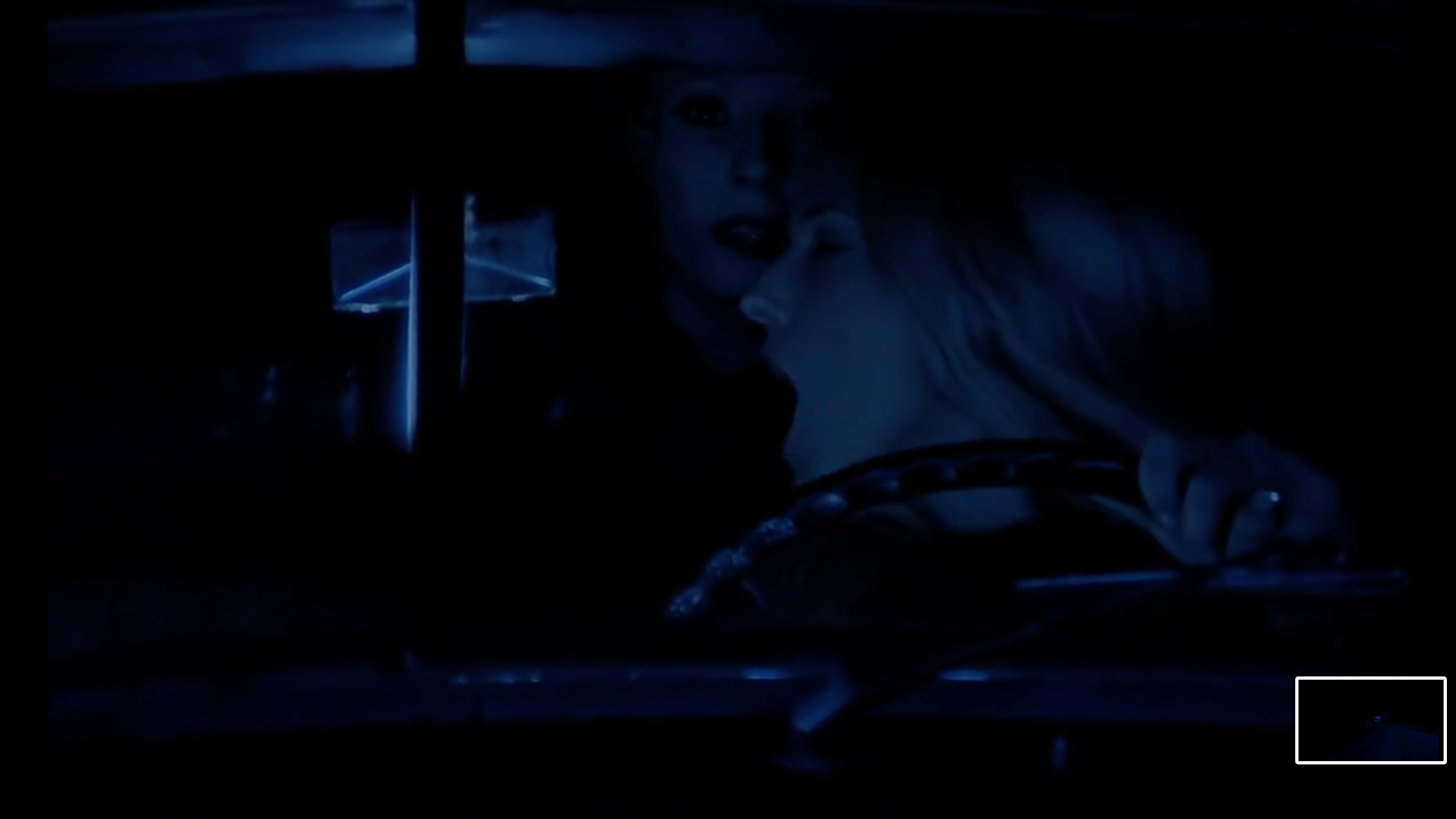

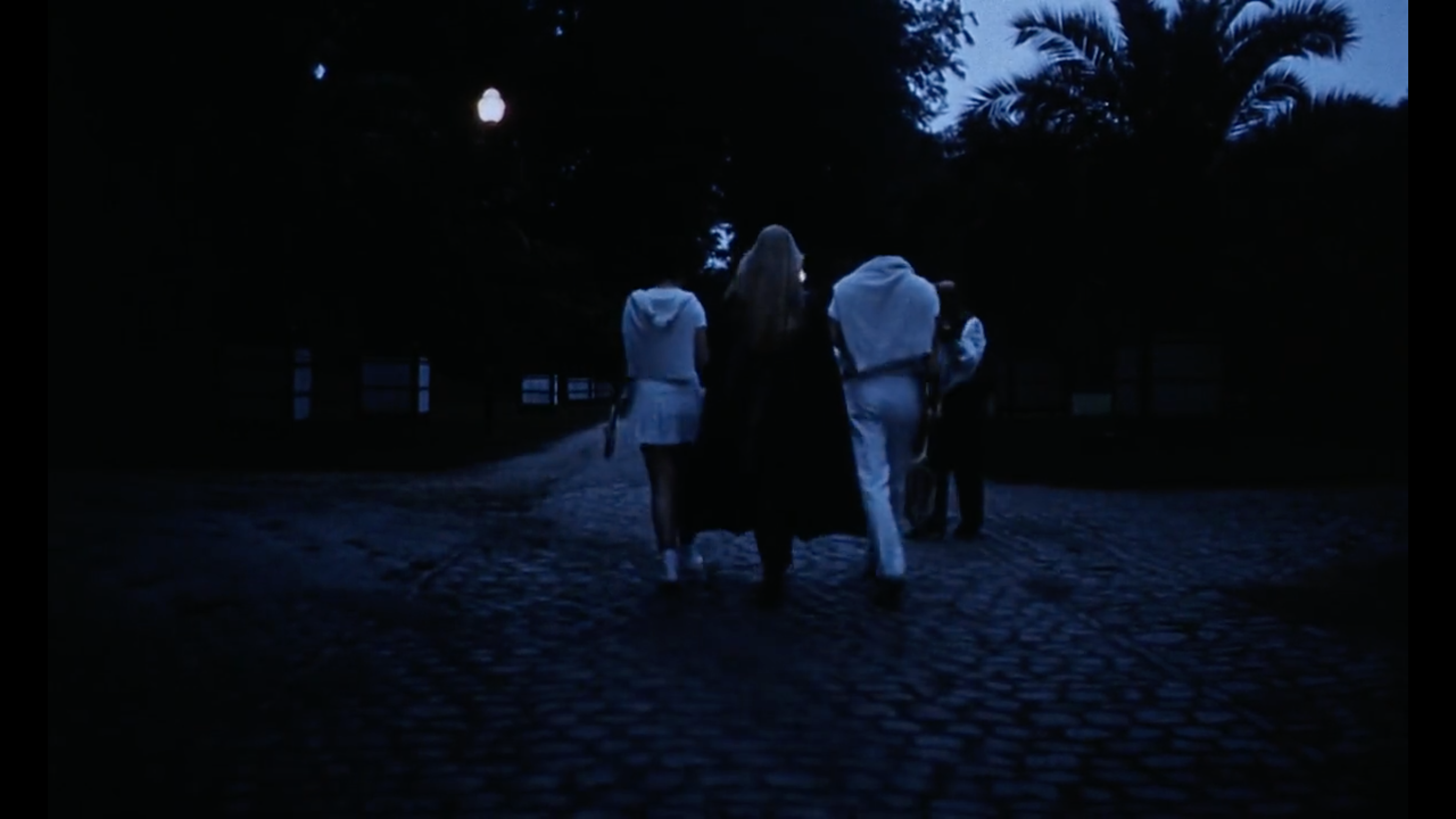
Daughters of Darkness (1971) Dir. Harry Kümel, Belgium, Showking Films
‘The Hunger’ (1983)
‘The Hunger’ (1983) revolves around the refined Miriam, a bisexual vampire that has lived over 2000 years alternating male and female lovers over centuries. (Richter, 2013, p.275) A fantastical and unrealistic set produces an opulent and thick atmosphere; with classical music and heavy synth, billowing curtains, and low sun lighting casting constant vertical shadows of duality. As liminal beings, vampires are coded as bisexual, and they are scary because they exist between borders; they are between life and death, they are non-monogamous and defy the gender binary with their androgyny. Their genderless desires are often portrayed as being between human and animal in their changing form and bloodthirsty appetite. (San Filippo, 2013 p.116) Opening with Bauhaus performing ‘Bela Lugosi’s Dead’ a nod to the vampiric themes of the film as the word is never uttered and there are no fangs. We first see Miriam (Catherine Deneuve) and her current lover John (David Bowie) cruising a goth couple from across the club. The elegant couple contrasts the rough punk victims, but as they seduce and murder them the scene is cut with parallel shots of bloodthirsty, ravenous monkeys. The editing and jarring audio cuts emphasise the primal sexuality, abject nature, and danger of the creatures.
Miriam alternates between male and female lovers every hundreds of years until they die from a mysterious illness that she is trying to cure, hoping Sarah (Susan Sarandon) may be the answer. Blood is an abject source of viral transmission, metaphorical of disease and plague “blood, indicating the impure, takes on the ‘animal’.” (Kristeva, 1982, p.96). Prior to its release, the AIDS epidemic had begun, spurring a strong association with homosexuality; making bisexual women a target of suspicion in the lesbian community for fears of contaminated sperm “motivating a safer sex etiquette against ‘intermingling’” (San Fillipo, 2013, p.46) Sarah grows enamoured with Miriam while trying to help John as he ages rapidly into an old decaying man. The piano scene features the widely known “Flower Duet” for two female voices with heavy sapphic connotations. (Lakme, 2007) Sarandon insisted the script be revised from Sarah being drunk to taking a single sip and spilling the rest before having very consensual sex with Miriam. (The Celluloid Closet, 1995) Her seduction results in a great deal more agency as a bisexual than other victims having the film end with Miriam’s demise and Sarah taking her place alongside a male and female partner. (Graham, 2016, p.44)


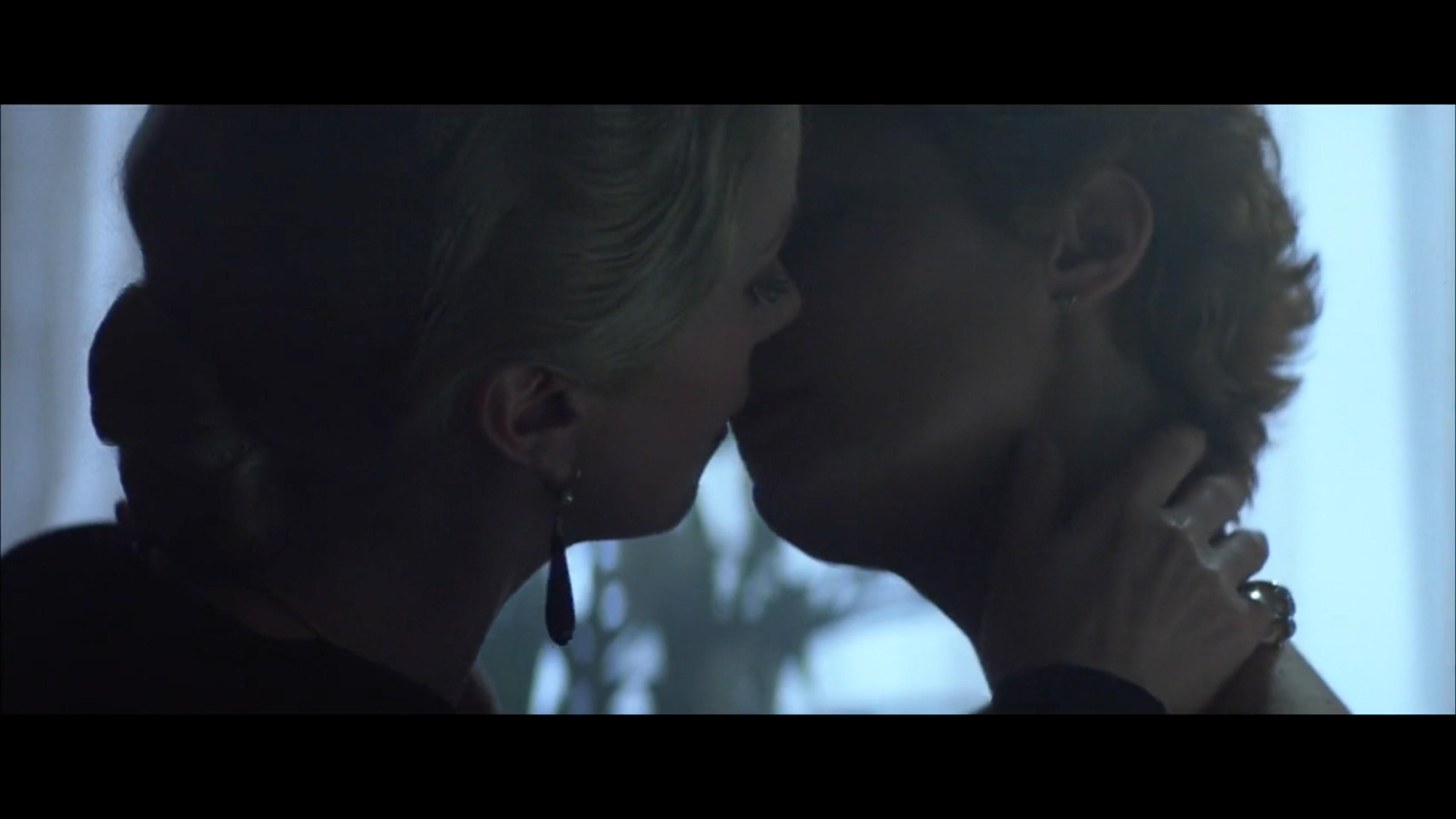
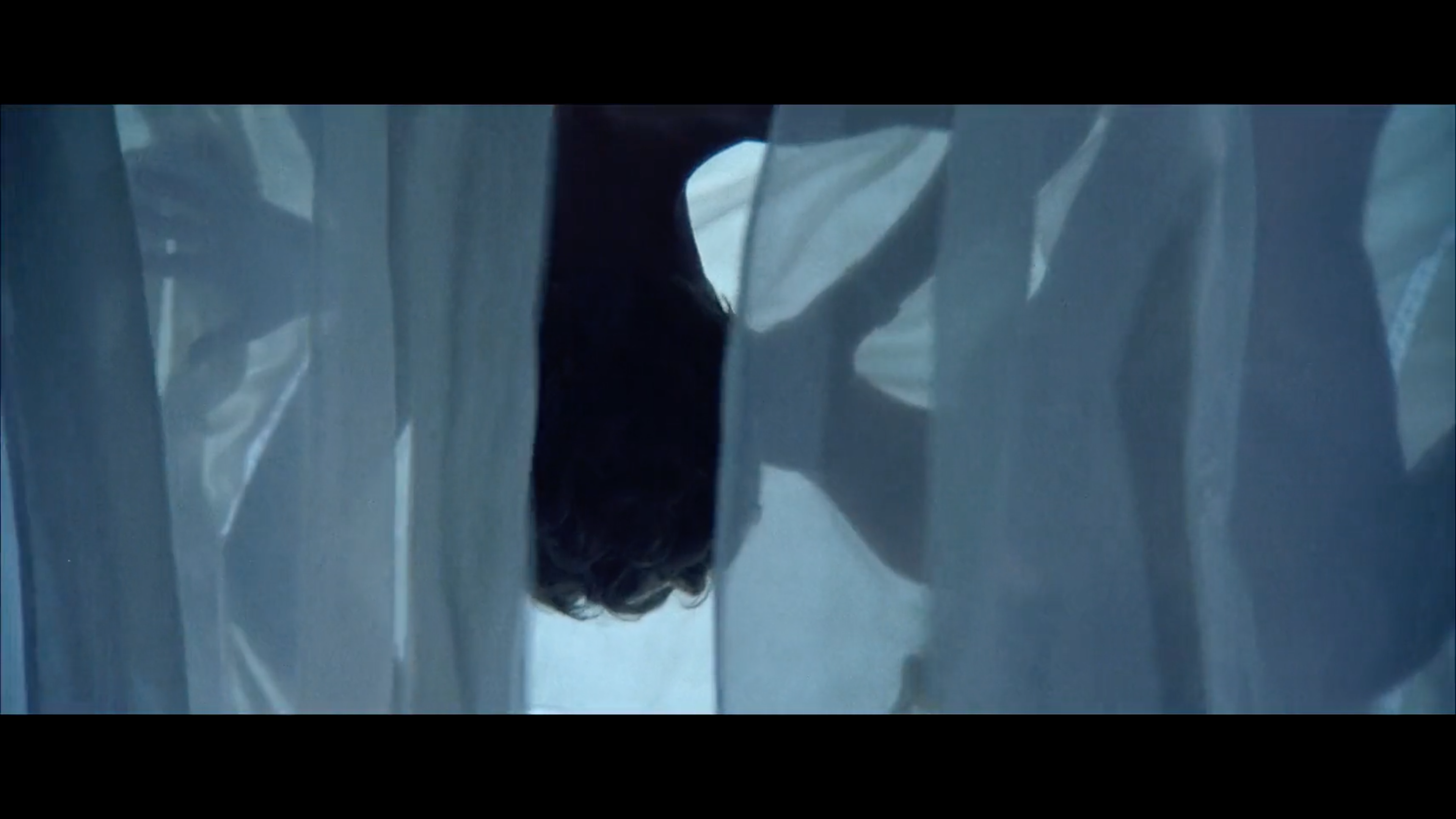
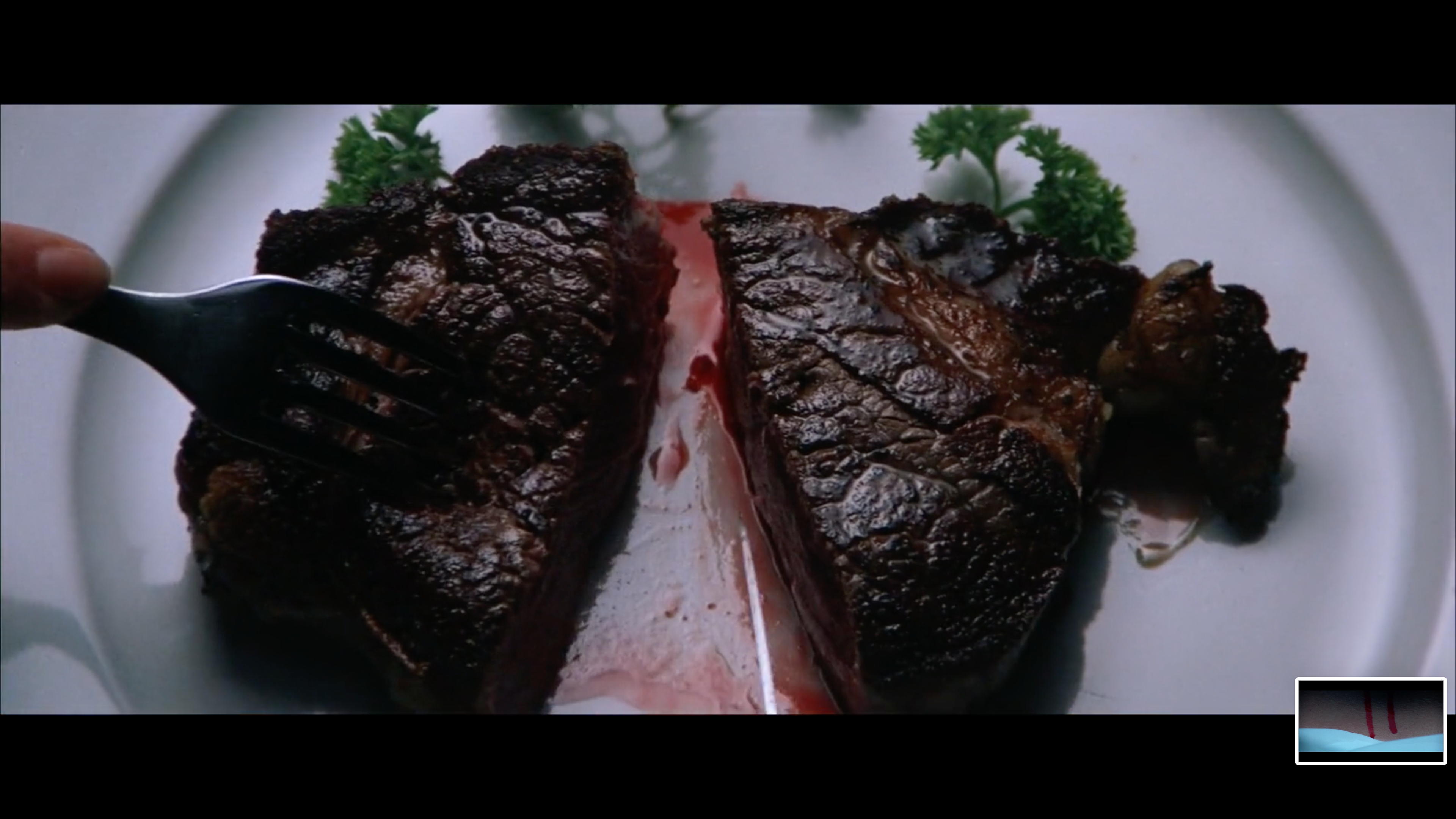
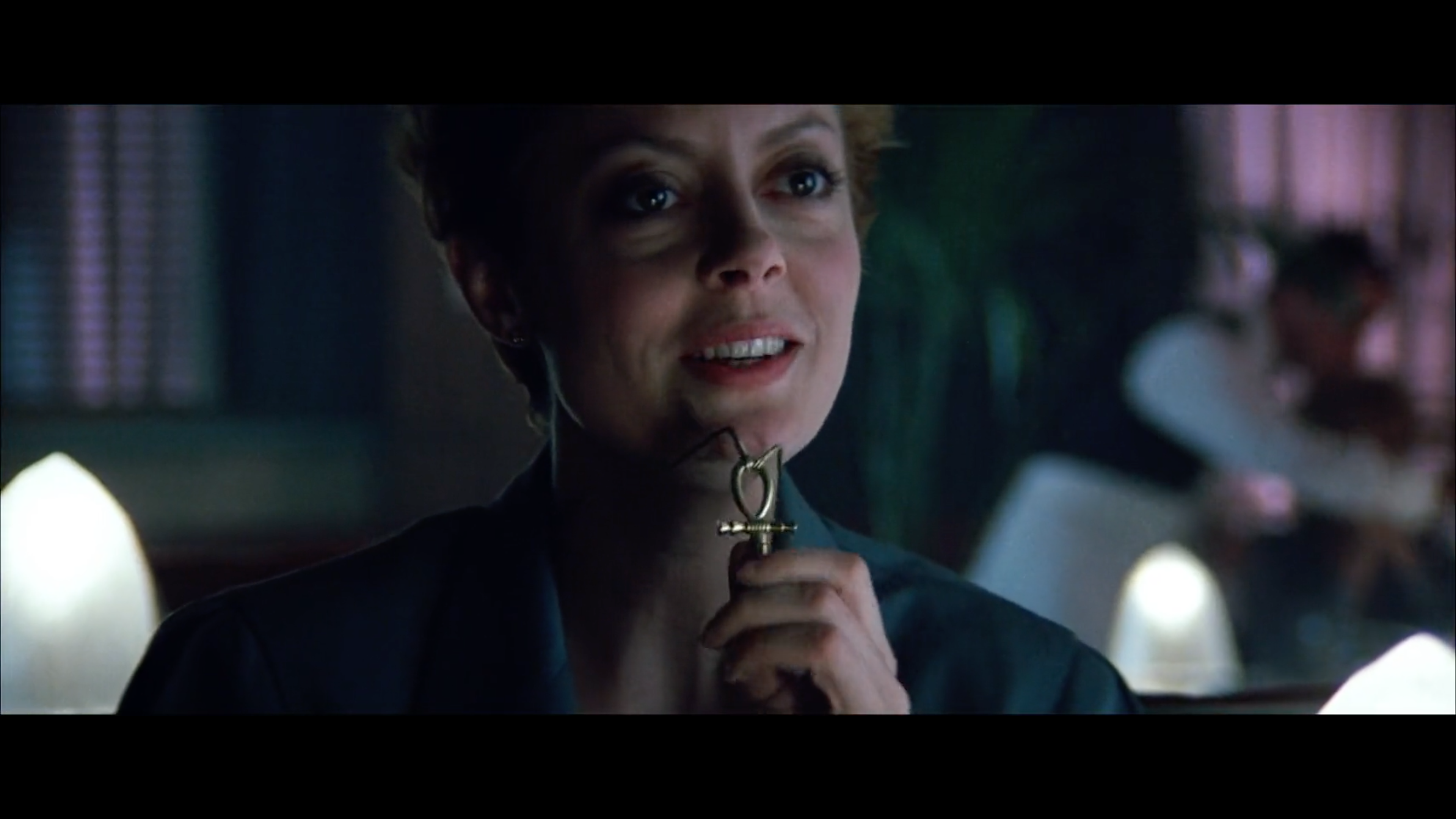
The Hunger (1983) Dir. Tony Scott, UK, Peerford
The bisexual love triangle disrupts the natural world of heterosexuality and tempted by the preternatural lesbian desire “suggests an internal struggle between a split self, in which the stiflingly straight self is inevitably seduced by the infinitely more enticing, immortal queer self.” (San Filippo, 2013 p.20) Queerness is linked to immortality as it interrupts the hetero nuclear family structure. Inherently immortality means there is no reason to couple, settle and preserve your legacy. In the film, queerness is an established concept, and a casual display of bisexuality is a non-issue because here, sexuality is fluid. Dining with her boyfriend after bloodletting sex with Miriam, Sarah also wears an Ankh pendant used to kill. Threatened by Sarah’s sexual fluidity he scolds her for refusing to eat the steak she ordered, she contends “I thought I wanted it” insinuating a metaphor for being closeted and in a relationship with a man. Forced into murderous bisexuality, Sarah feeds on her boyfriend at the apartment and Miriam speaks of their eternal love. As they kiss Sarah slashes her own throat with the pendant, but they continue kissing as blood splatters everywhere, Miriam falls to her death at the hands of her dead crumbling lovers and Sarah prevails with a man and woman companion. The sudden explosion of blood in this scene relates to the representation of the vampire as female. Blood and female vampires are a post-human abject body because they reinforce the notion that lesbian desire is deadly because “women’s blood gives life/birth to the lover/child” (Creed, 1993, p.70) and hetero/homo binary is transgressed. (Creed, 1993, p.71)

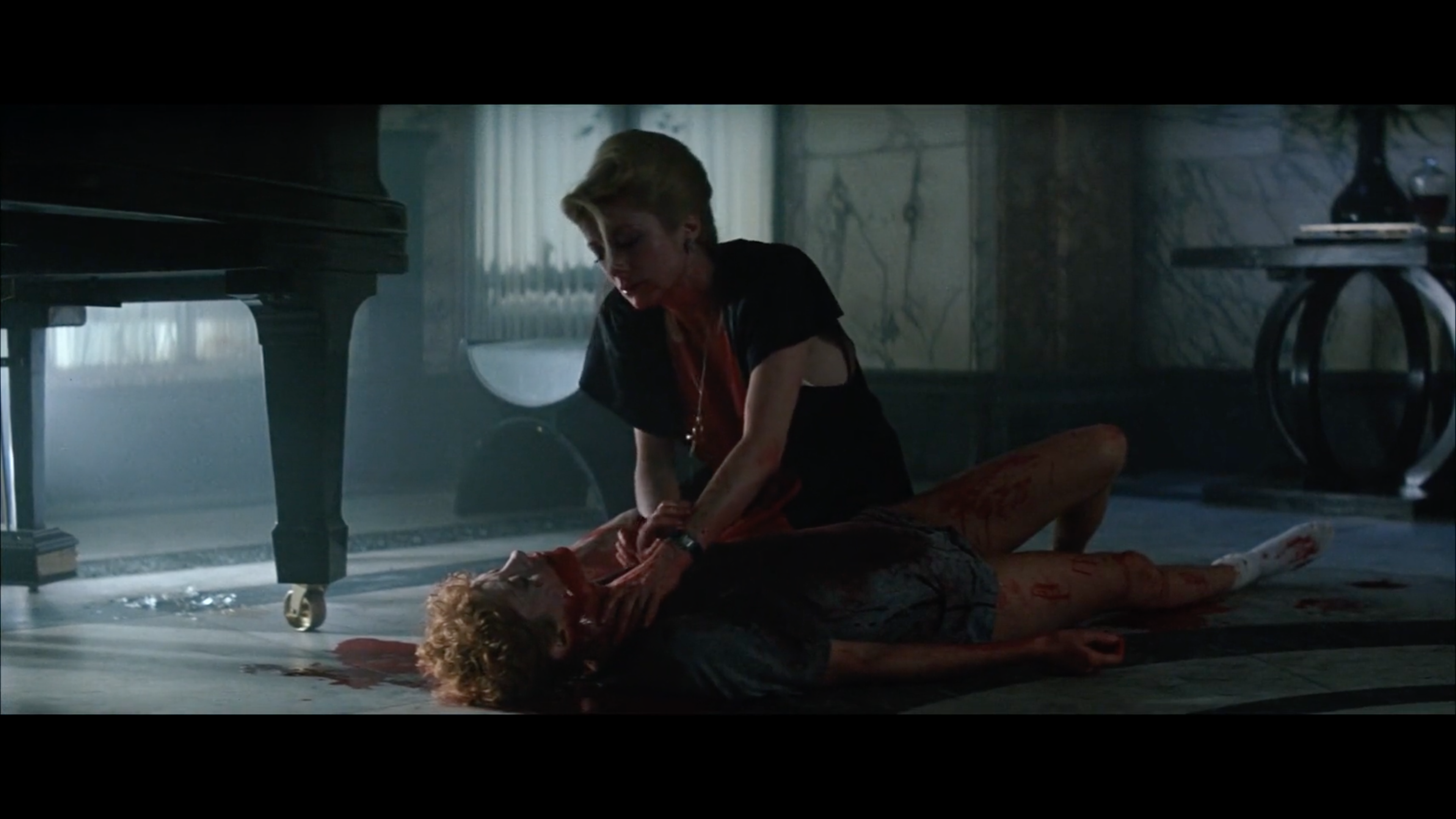

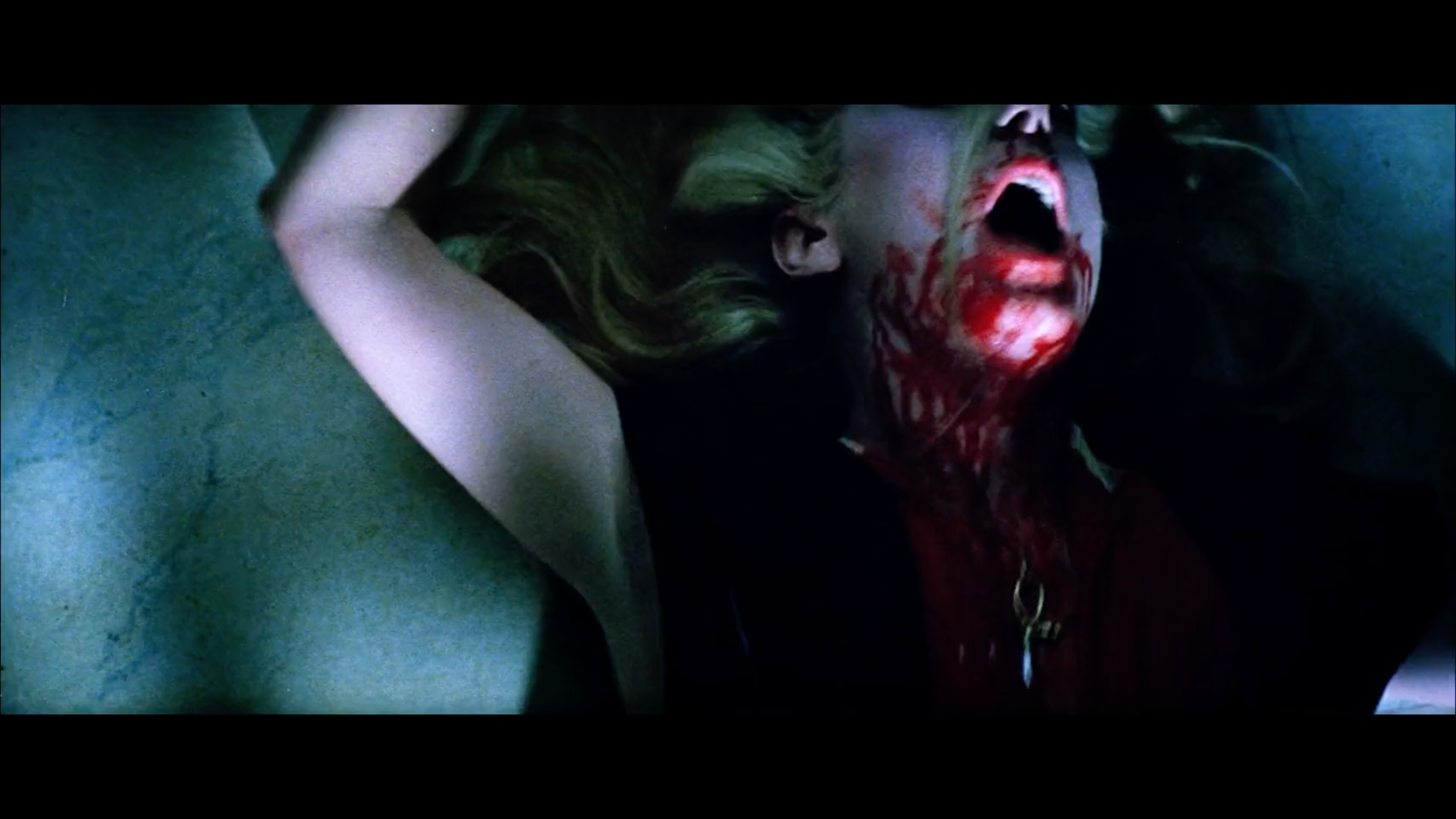

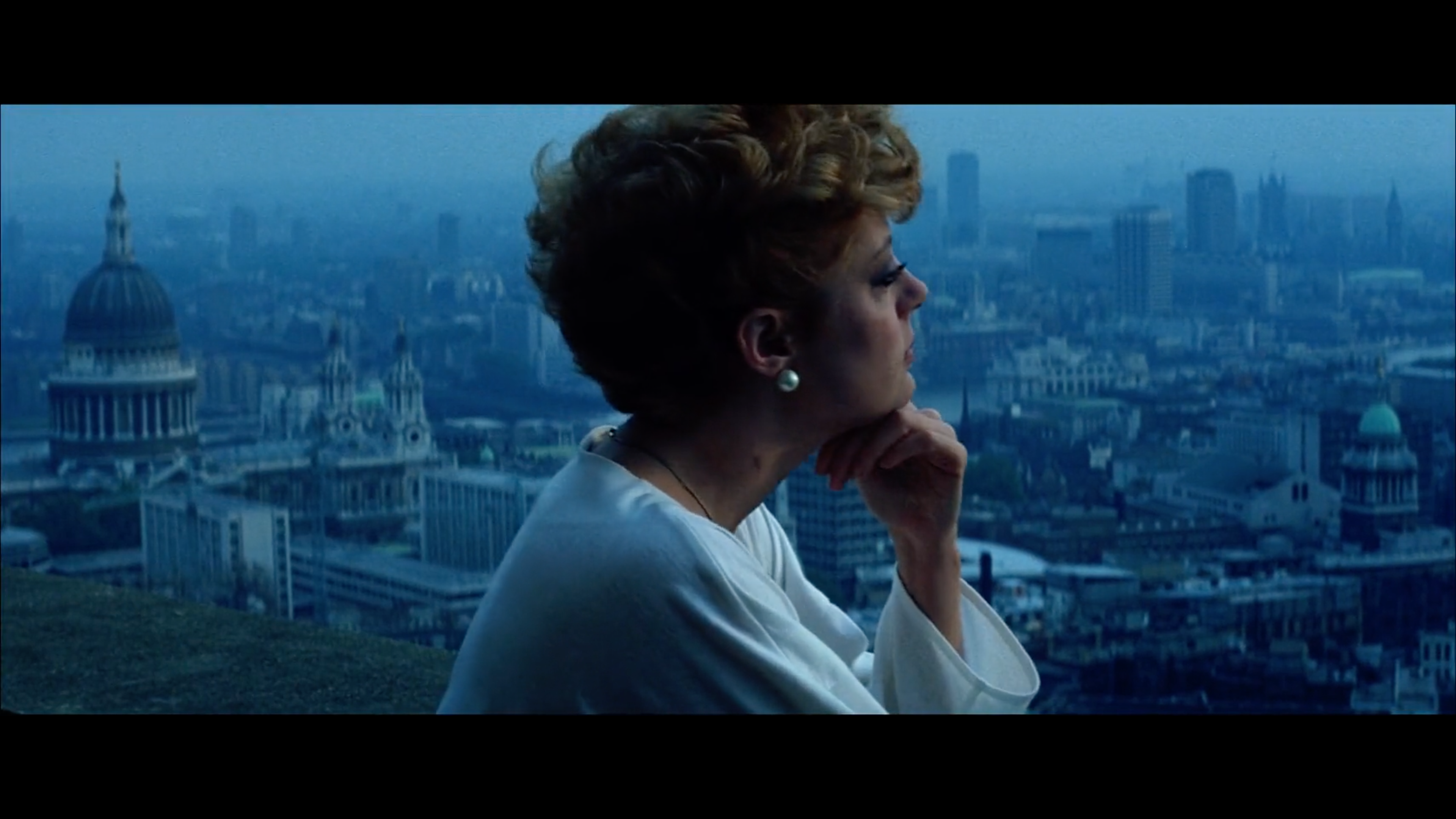
The Hunger (1983) Dir. Tony Scott, UK, Peerford
Jennifer’s Body (2009)
Jenniffer’s body (2009), written and directed by women worked to subvert the lesbian vampire trope than simply parody it. Female driven horror films leverage and explore the narrative and aesthetic horrors of the reproductive, maternal, and sexual, to expose the underpinnings of the social, political and philosophical othering of women. (Harrington, E, 2018 p.1) Jennifer’s Body (2009) is not technically a vampire film but the female monster seduces and consumes her victims, a bisexual tale of revenge and questioning who the real monster is through depictions of abject female monstrosity. The film constructs Jennifer’s literal body as abject through images of blood, vomit, saliva, and body defilement. Jennifer’s Body (2009) establishes the monstrous feminine as a post-human cultural body critiquing the patriarchy through images of abjection, campy dialogue, and the othering of women.

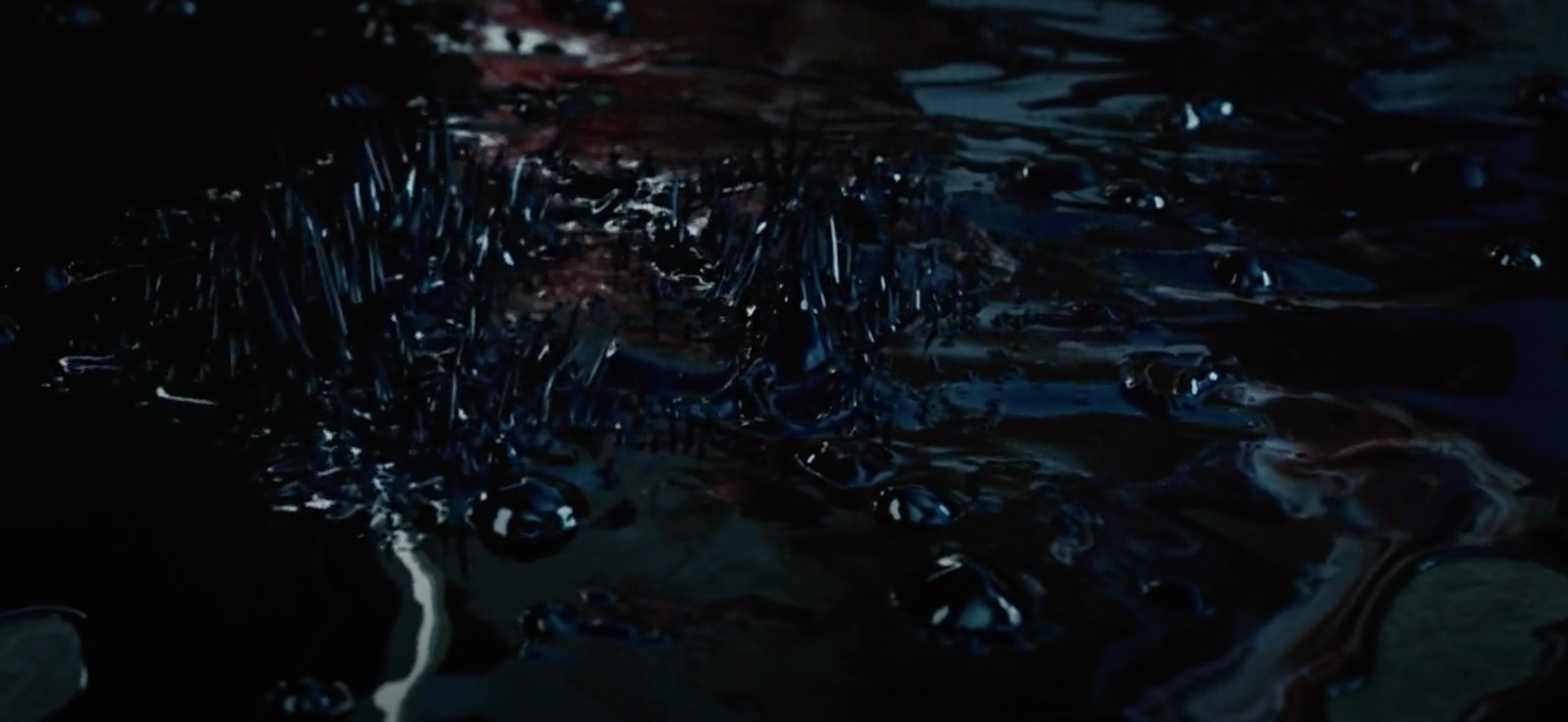
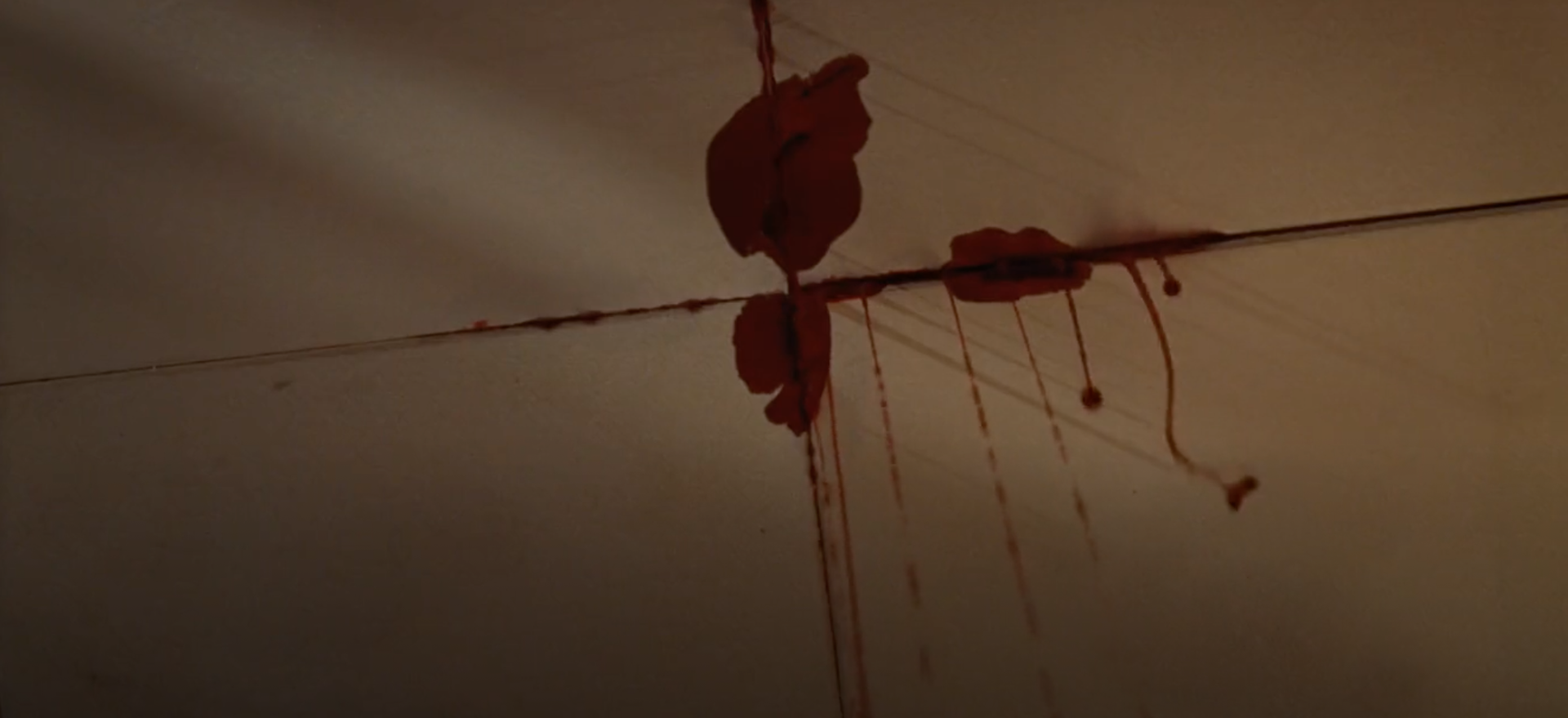
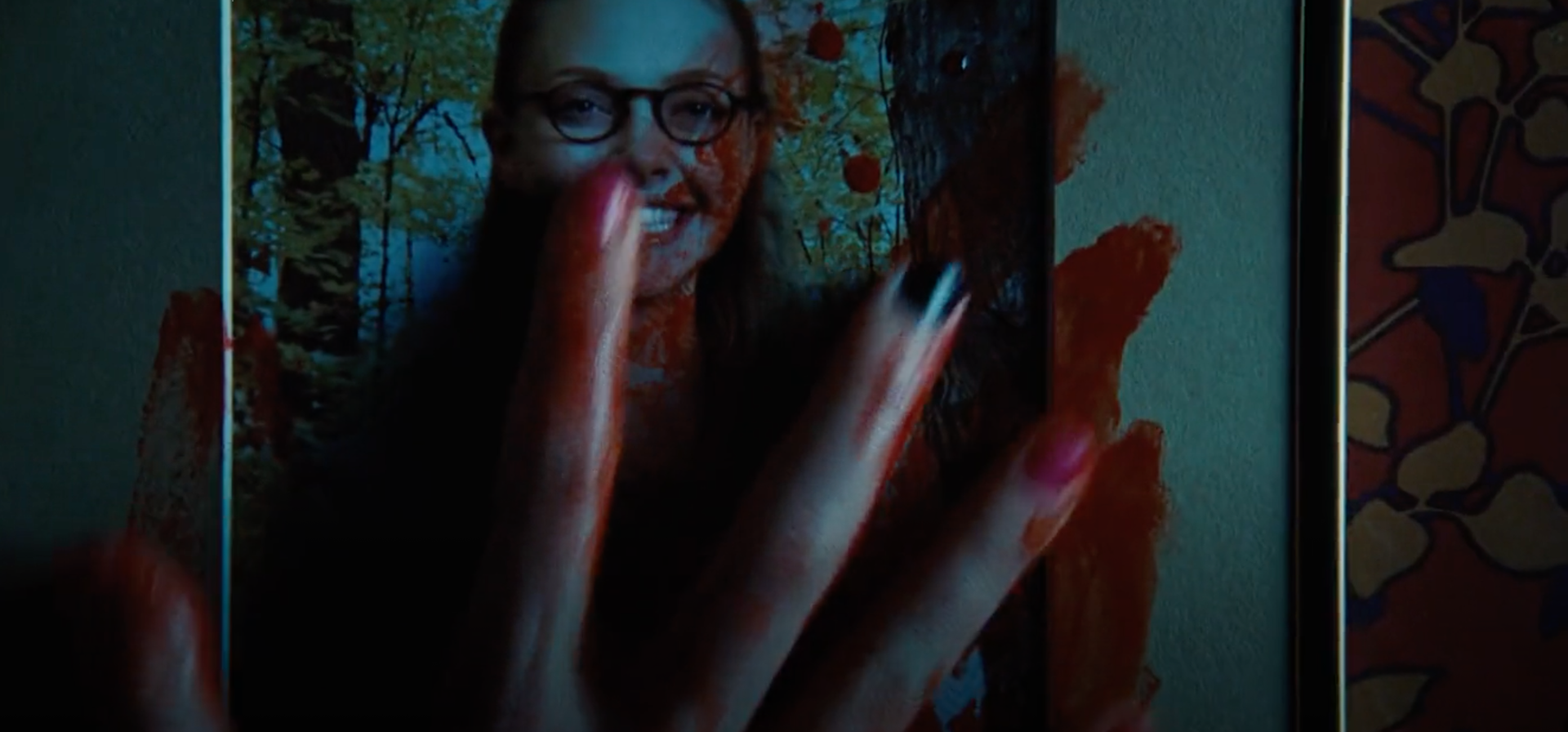
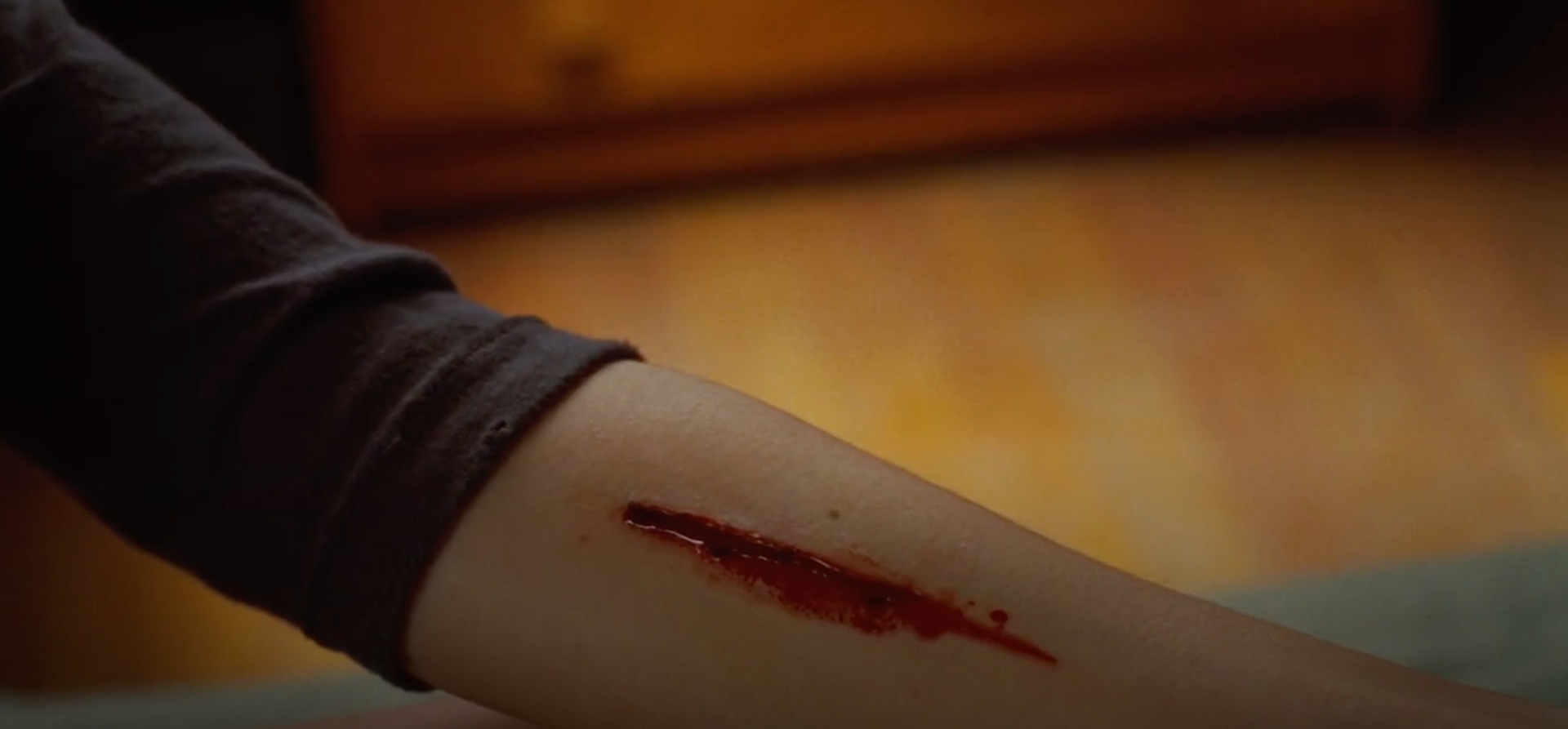
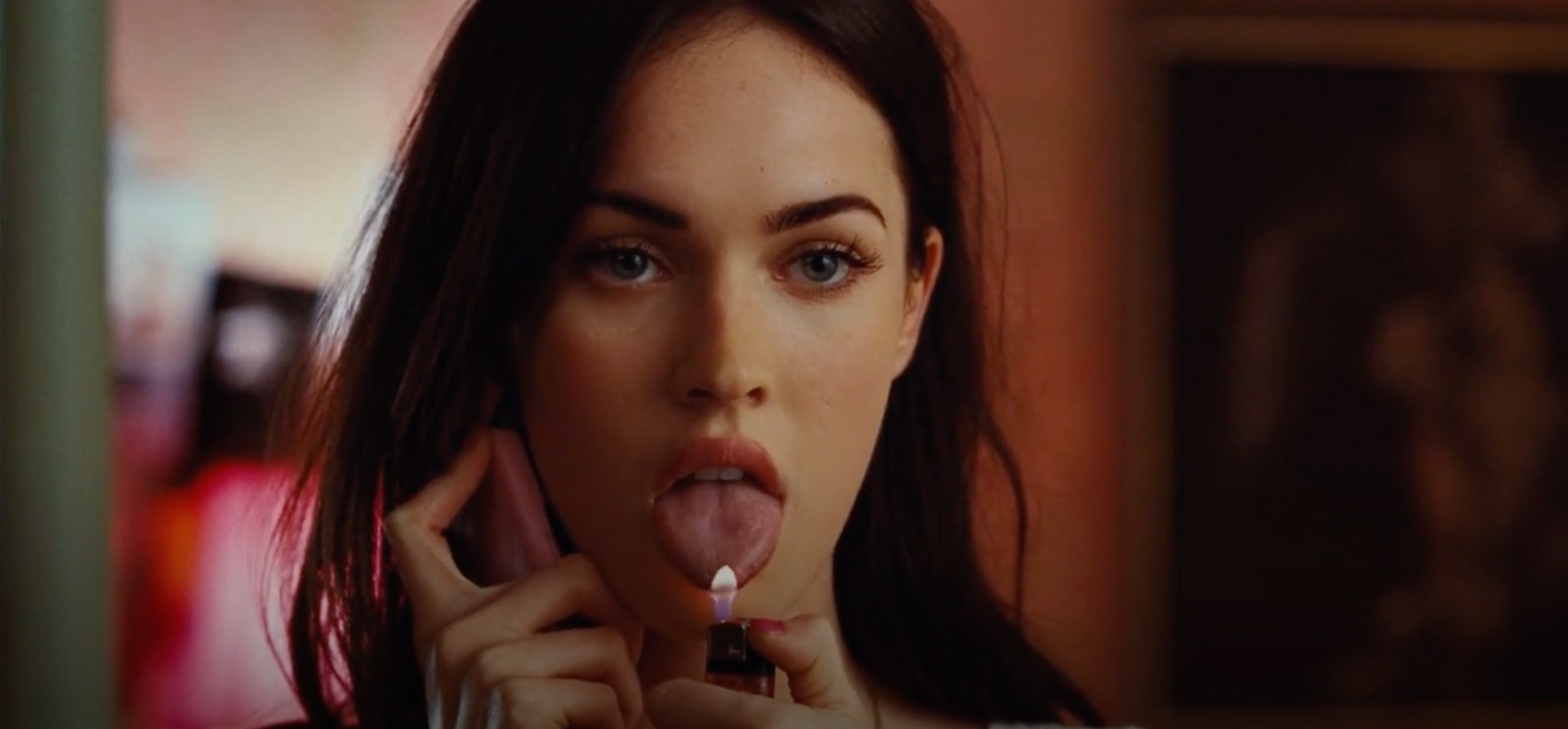
Jennifer’s Body (2009) Dir. Karen Kusama, USA, Fox Atomic
The film centres around the suggestive relationship between alluring Jennifer Check and mousy Needy Lesnicky. High school bombshell Jennifer is mistaken for a virgin and forced into a ritual sacrifice by an insufferable indie band in exchange for fame and success. The assault is a metaphor of phallic penetration and symbolic rape. (Wills, and Roberts, 2017, p.3) Jennifer transforms into a psychotic monster because she has been symbolically castrated. (Creed, 1993, p.122) The female vampire is abject through images of blood and body defilement. Femininity is highlighted through bodily functions, suggesting woman as an impure or polluted subject - her fluidity is threatening and unstable, between human and inhuman. “Blood as a vital element, also refers to women, fertility, and the assurance of fecundation. It thus becomes a fascinating semantic crossroads, the propitious place for abjection.” (Kristeva, 1982, p.96) The female body challenges bodily boundaries at every age, her transformations perceived as primal, animalistic, and other; a post-human body.
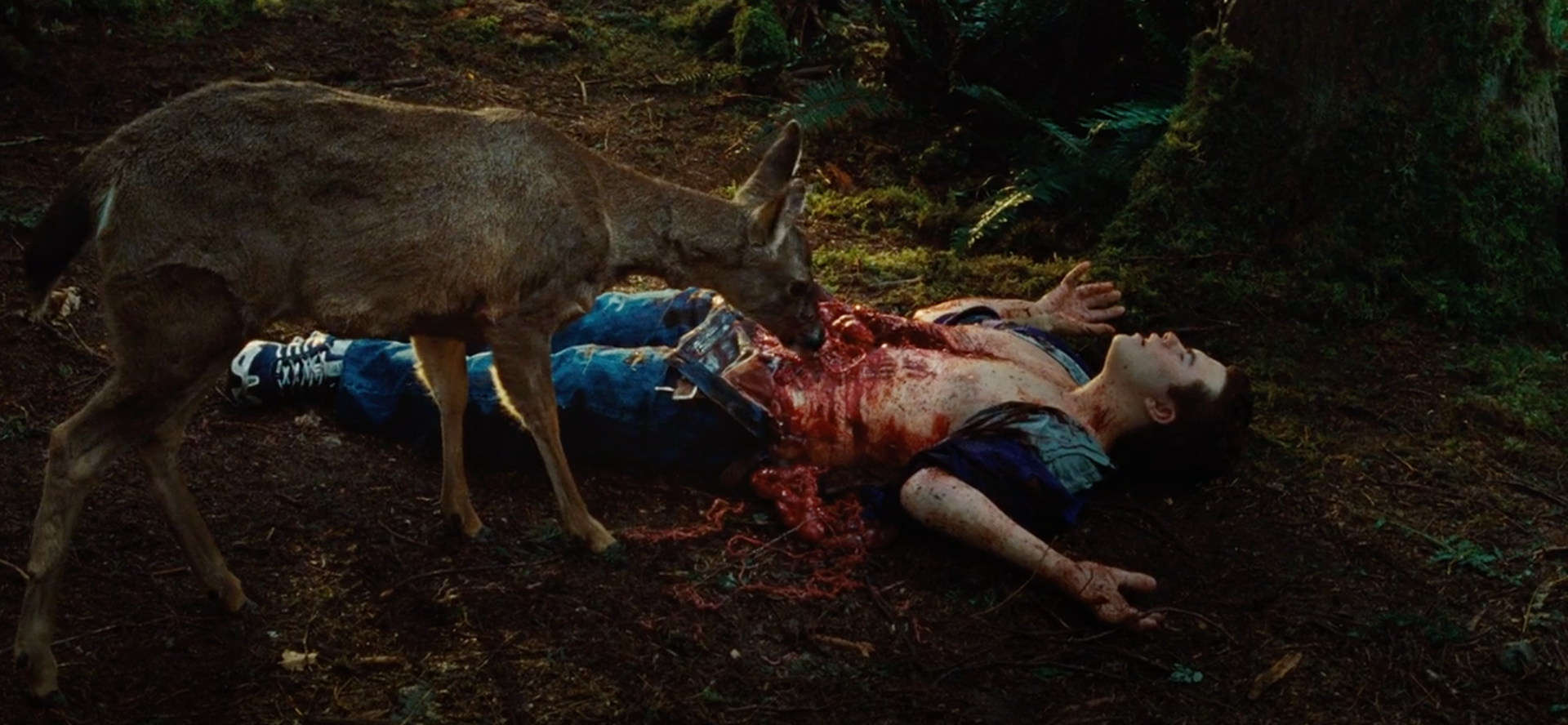
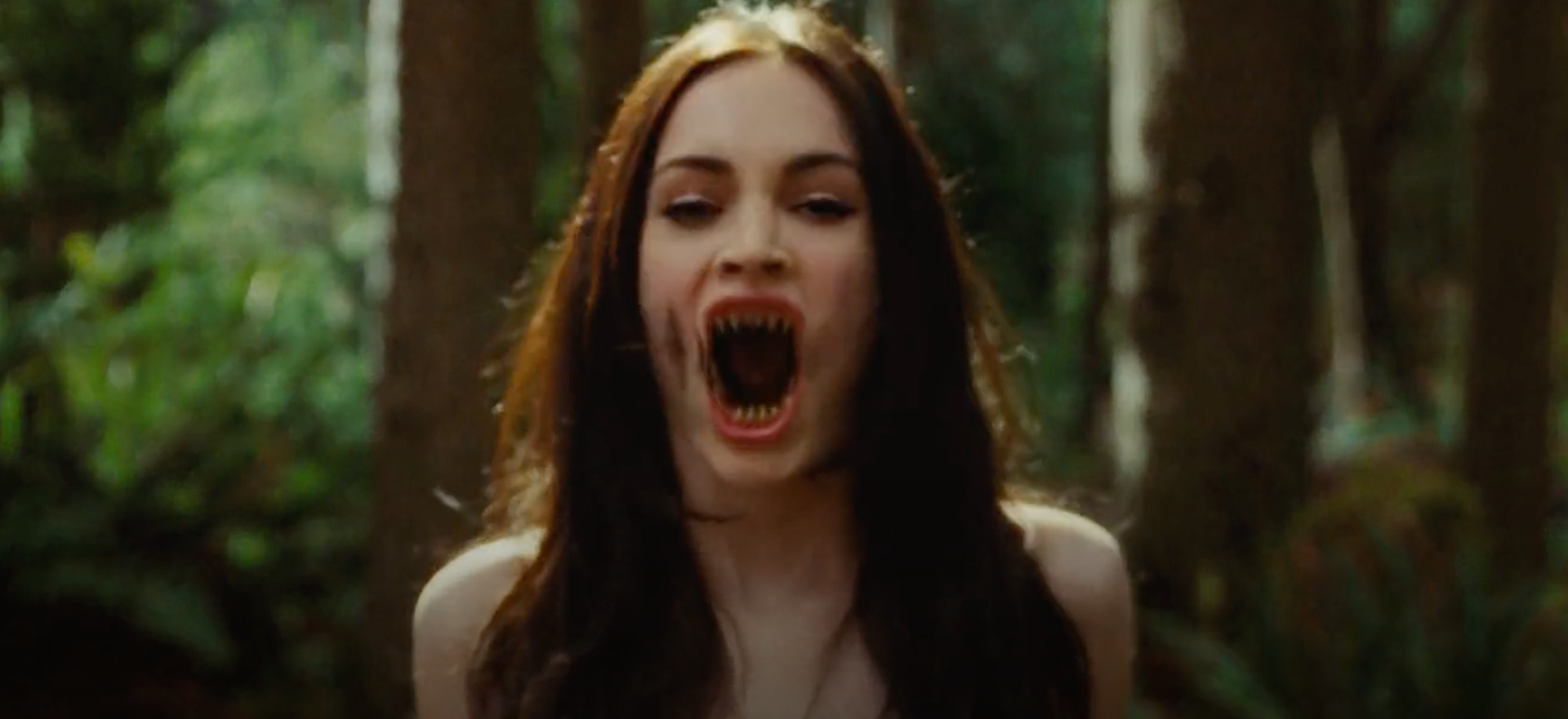


Jennifer’s Body (2009) Dir. Karen Kusama, USA, Fox Atomic
Upon release in 2009, Jennifer’s Body was met with extreme backlash from audiences and critics after being marketed as a horror sex-comedy to teen boys. The industry reckoning with sex crimes in the #MeToo era saw an earnest reappraisal of female media, including Jennifer’s Body (2009), (Wills & Roberts, 2017, p.2) Laura Mulvey’s seminal essay Visual Pleasure and Narrative Cinema exposes the classic Hollywood representation of women as passive sexual objects framed by the male gaze. (Mulvey, 1989, p.4-27) A purely female gaze, that which refers to “how women create and view images of each other and men” (Gamman & Marshment,1989, p.12) is contaminated by the patriarchal society in which we live. (Malone, 2018, p.2) The film parodies traditional horror conventions, satirising the hypersexual, man-hating lipstick feminist representation of women to expose the pressure that media places on young girls and women as audiences. The film uses the masculine creation of the monster to expose the real monster - “boy run media” aka the patriarchy. Jennifer represents the female monster that patriarchy has created and imposed on young girls, transforming into the demonic version of a man’s desire: a “blood-sucking, evil demon who seduces man in order to possess his phallic power”. (Ayers, 2011, preface xiii)
The film subverts the male gaze by not objectifying her, she is not fetishised by the camera but by other characters in the film. Jennifer is at no point reduced to an object or a complete monster in the film. Fox has been vocal about Jennifer’s Body reflecting her treatment by media and the film industry, reducing her to a sex symbol. (ET Live, 2019) Jennifer uses her looks to get what she wants, failing to see her as a threat many men meet their demise after she seduces them. When Jennifer seduces and leads a student to the forest, woodland animals surround her before she consumes him. Horror arouses feelings of fear and unease - ‘the primal uncanny’ aligning woman, the animal and death.” (Bullock, 2007, p.109) A confirmation of the girls' bisexuality comes from their sensual kiss scene and in the quippy dialogue which is alluded to throughout the film; from “Needy Lesbian” to their intimate friendship, sandbox love, and lesbegay insults. (Kooyman, 2012, p.192) The gothic prom fight scene amuses queer audiences “I thought you only killed boys”, Jennifer retorts “I go both ways”. Needy sees Jennifer for all she is, after being stabbed, Jennifer says “my tit” to which Needy replies “no, your heart” capturing how she is the only character to recognise Jennifer as a person, not just a body. Her mother comes and mourns over Jennifer’s dead body further humanising her. Because Jennifer was treated less than human at the hands of men, she becomes monstrous. However, the real monster is the way that women have been exploited, objectified, and abused by men. (Wood, 2019, p.79) Jennifer’s monstrosity lives on in Needy and the end credits show Needy exact revenge for Jennifer further humanising the monster, justice is met and their love survives death.
Conclusion
The female vampire in these films transgresses arbitrary dichotomies surrounding gender and sexuality and its association with the post-human body – animal and monstrosity that house society's anxieties and fears. Monsters in films perpetuate immortal queer icons and narratives that expand the pallet of being for all of society after us. The lesbian and bisexual vampire challenge the social order by subverting the stereotype of helpless woman as victim - where she doesn’t need a man romantically or financially and is thus independent. A new archetype of womanhood is constructed where binaries are disrupted and she is completely connected to ecology – sexuality, blood, animal, life and death. A re-examination of these films through a bisexual feminist lens disrupts the binary view of gender and sexuality, insinuating legitimate and enteral queer narratives and legacies formed through lustful bonds and culture rather than procreation.
References
Films
Daughters of Darkness (1971) Dir. Harry Kümel, Belgium, Showking Films
The Hunger (1983) Dir. Tony Scott, UK, Peerford
Jennifer’s Body (2009) Dir. Karen Kusama, USA, Fox Atomic
The Celluloid Closet (1995) Dir. Rob Epstein, Jeffrey Friedman, USA, Sony Pictures Classics
Texts
Auerbach, N, 1995, Our Vampires, Ourselves, Chicago: University of Chicago Press
Ayers, M. Y., 2011. Masculine Shame: from Succubus to the Eternal Feminine. East
Sussex: Routledge.
Blackburn, S, 2016, A Dictionary of Philosophy, Oxford University Press, p141
Bullock, M 2007, ‘Figuring the uncanny: Review article. [Brassington, Pat. Pat Brassington (2006); Creed, Barbara. Phallic Panic: Film, Horror and the Primal Uncanny (2005).]’, Australian feminist studies, vol. 22, no. 54, pp. 409–411.
Cohen, J. J. (Ed.), 1996, Monster Theory: Reading Culture (NED-New edition). University of Minnesota Press
Creed, B, 1993, The Monstrous-Feminine, London: Routledge.
Douglas, B and Deyneka, L, 2014. Dracula's daughters: The Female Vampire on Film, Scarcrow Press, United Kingdom
Gamman, L. & Marshment, M., 1989. The Female Gaze: Women as Viewers of Popular Culture.
Seattle: Real Comet Press.
Harrington, E, 2018, Film Philosophy at the Margins Erin Harrington Women Monstrosity and Horror Film, pp. 1-297
Jaleca, d, 2017, alien feminism and cinemas post human women, The University of Chicago Journal of women in culture and society, Chicago pp 1-46
Kooyman, B., 2012. Whose body? Auteurism, feminism and horror in Hostel Part II
and Jennifer’s Body. Australasian Journal of Popular Culture, 1(2), pp. 181-195.
Kristeva, J, 1982, Powers of Horror: An Essay on Abjection, trans. Leon S. Roudiez, New York: Columbia University Press
Kristeva, J., 2002. Approaching Abjection. In: The Portable Kristeva. New York: Columbia University Press, pp. 229-247.
Malone, A., 2018. The Female Gaze. Coral Gables: Mango Publishing Group.
Mulvey, L, 1989, Visual and other pleasures. Basingstoke: Palgrave Macmillan
Richter, N 2013, ‘Bisexual Erasure in “Lesbian Vampire” Film Theory’, Journal of bisexuality, vol. 13, no. 2, pp. 273–280.
San Filippo, M 2013, The B Word: Bisexuality in Contemporary Film and Television, Indiana University Press, Bloomington.
Thompson, JD 2016, ‘Revenge is a dish best served sapphic: The lesbian vampire film as revenge fantasy’, Colloquy, no. 31, pp. 4–15.
Weiss, A, 1993, Vampires and violets: Lesbians in film. New York, NY: Penguin
Books.
Wills, D. and Roberts, T. 2017, 'Desiring Monsters: Femininity, Radical Incontinence, and Monstrous Appetite in Ginger Snaps, Jennifers Body, and Deadgirl',
Reconstruction: Studies in Contemporary Culture, 17(2)
Wood, R, 2018, Robin Wood on the Horror Film: Collected Essays and Reviews, edited by Barry Keith Grant, Wayne State University Press
Zimmerman, B, “Daughters of Darkness: The Lesbian Vampire on Film,”
in ed. Barry Keith Grant, Planks of Reason: Essays on the Horror Film (London: Scarecrow
Press, 1984), pp 1-178
Video
YouTube, 2007. The Flower Duet (Lakmé) - Léo Delibes. [video] Available at: <https://www.youtube.com/watch?v=8Qx2lMaMsl8> [Accessed 9 June 2022].
YouTube, 2019. ET live: Jennifer's Body Reunion: Megan Fox and Diablo Cody Get Candid About Hollywood (Exclusive). [video] Available at: <https://www.youtube.com/watch?v=u2JLRtWlq0o> [Accessed 9 June 2022].
YouTube, 2019. Daughters of Darkness (1971) ORIGINAL TRAILER. [video] Available at: <https://www.youtube.com/watch?v=DYEKxAtcA8M> [Accessed 6 June 2022].
YouTube, 2020. The Hunger (1983) – Opening. [video] Available at: <https://www.youtube.com/watch?v=W_zodjf-YbA> [Accessed 6 June 2022].
YouTube, 2022. Jennifer's Body (2009) End Credits. [video] Available at: <https://www.youtube.com/watch?v=wzmZREGzs_s> [Accessed 5 June 2022].